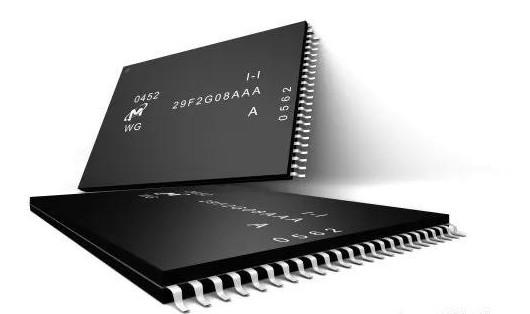Comparison of NorFlash, NandFlash and eMMC (4)
Flash memory is an electrically erasable programmable read - only memory that allows multiple erases or writes during operation. This technology is primarily used for general data storage, as well as for the exchange of data between computers and other digital products, such as memory cards and U disks. Flash memory is a non-volatile storage, so it does not need to consume electricity in terms of storing data alone.

Flash memory has better dynamic seismic performance than hard disk, which is the reason why flash memory is widely used by mobile devices. Another feature is its reliability when it’s made into a memory card. Even if immersed in water, it is enough to resist high pressure and extreme temperature. The write speed of flash memory is often significantly slower than the read speed.
NorFlash
NOR flash takes a long time to erase, but it provides a complete addressing and data bus, allowing random access to any area on the memory, which makes it ideal for replacing the old ROM chip. At that time, ROM chip was primarily used to store code that was hardly updated, such as the computer's BIOS or the Set-top Box firmware. NOR flash not only endures 10 thousands to 1 million erase cycles, but also is the basis for early removable flash storage media. CompactFlash is originally based on NOR flash, although it changes to the a lower-cost NAND flash.
NandFlash
NAND flash was released by Toshiba at the International Solid-State Circuit Conference (ISSCC) in1989. Before read and write operations on NAND flash, external master control and circuit design are added. NAND flash has a shorter erase time, and smaller area of each storage unit, which makes NAND flash a higher storage density and a lower cost per bit compared with NOR flash. At the same time, it can be erased 10 times higher than NOR flash. However, I/O interface of NAND flash does not have random access to external address bus, so that it must be read in a block. The typical block size of NAND flash is hundreds or thousands of bits.
Because most microprocessors and microcontrollers require byte-level random access, NAND flash is not suitable to replace those ROMs used to load programs. From this point of view, NAND flash is more like a secondary storage device such as CD or hard disk. NAND flash is ideal for a large number of storage devices such as memory cards. The first removable storage media based on NAND flash is SmartMedia. Since then, many storage medium follow the use of NAND flash, including MultiMediaCard, Secure Digital, Memory stick, and xD card.
eMMC
EMMC (Embedded MulTI Media Card), established by the MMC Association, is a standard specification of embedded memory for products such as mobile phones or tablets. eMMC is equivalent to NAND flash plus master IC, and similar to SD or TF card in external interface protocol. One obvious advantage of eMMC is the integration of a controller in the package that provides standard interfaces and manages flash memory, allowing handset manufacturers to concentrate on other parts of product development and shorten the time to launch products to the market. These characteristics are equally important for NAND vendors who want to reduce lithography size and cost.
eMMC consists of an embedded storage solution with an MMC (Multimedia Card) interface, a flash memory device, and a master controller, all in a small BGA package. eMMC has fast and upgradeable performance, whose interface speeds is up to 52 M Bytes per second and interface voltage can be 1.8v or 3.3v.
Conclusion
That’s all for the introduction of Norflash, NandFlash, eMMC. If there are any shortcomings, welcome to correct them.
